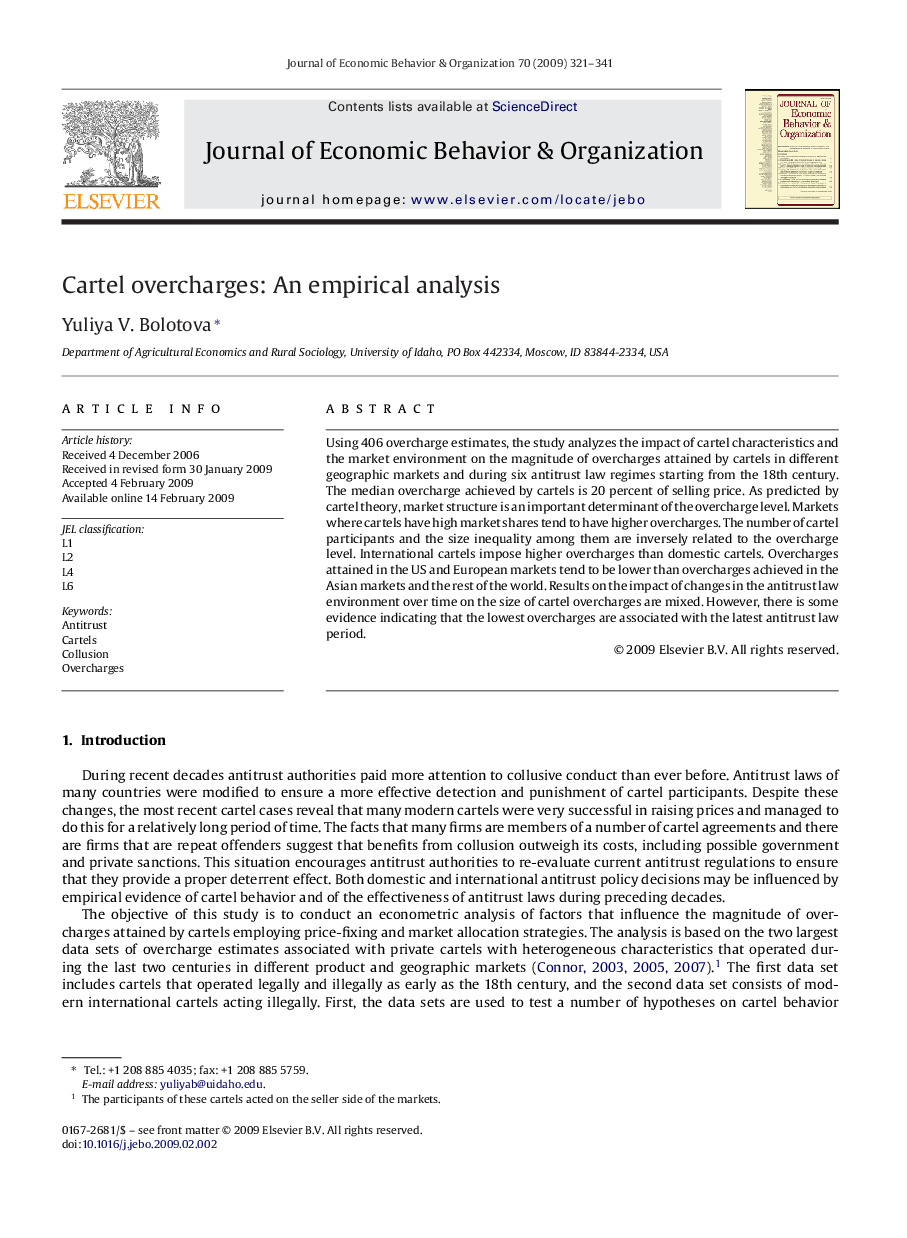| Article ID | Journal | Published Year | Pages | File Type |
|---|---|---|---|---|
| 884353 | Journal of Economic Behavior & Organization | 2009 | 21 Pages |
Using 406 overcharge estimates, the study analyzes the impact of cartel characteristics and the market environment on the magnitude of overcharges attained by cartels in different geographic markets and during six antitrust law regimes starting from the 18th century. The median overcharge achieved by cartels is 20 percent of selling price. As predicted by cartel theory, market structure is an important determinant of the overcharge level. Markets where cartels have high market shares tend to have higher overcharges. The number of cartel participants and the size inequality among them are inversely related to the overcharge level. International cartels impose higher overcharges than domestic cartels. Overcharges attained in the US and European markets tend to be lower than overcharges achieved in the Asian markets and the rest of the world. Results on the impact of changes in the antitrust law environment over time on the size of cartel overcharges are mixed. However, there is some evidence indicating that the lowest overcharges are associated with the latest antitrust law period.
